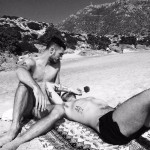We speak to ED FIRTH, the artist behind striking queer zine POUND SHOP…
When did you first start drawing?
I’ve always drawn; I think like most people I was finger painting before I could walk or speak.
Have you always considered yourself an artist?
Yeah, there was sort of no question that I would always be making pictures and turning thoughts into things. At times I was writing non-stop for months or learning to make video and animation – I spent nearly a decade working as a VJ full time, projecting moving collages on club walls and theatre stages, and that moved into projected street art for a while, where I was animating loops and taking them out on to the streets with another guy who helped with the technical stuff. It was a bit guerrilla and we’d heard lots of stories about people being arrested for projecting ads on buildings, but we never had any trouble. I was designing animations for specific buildings like the De la Warr pavilion in Bexhill On Sea and projecting with a live musician performing for an audience of 100 via wireless headphones.
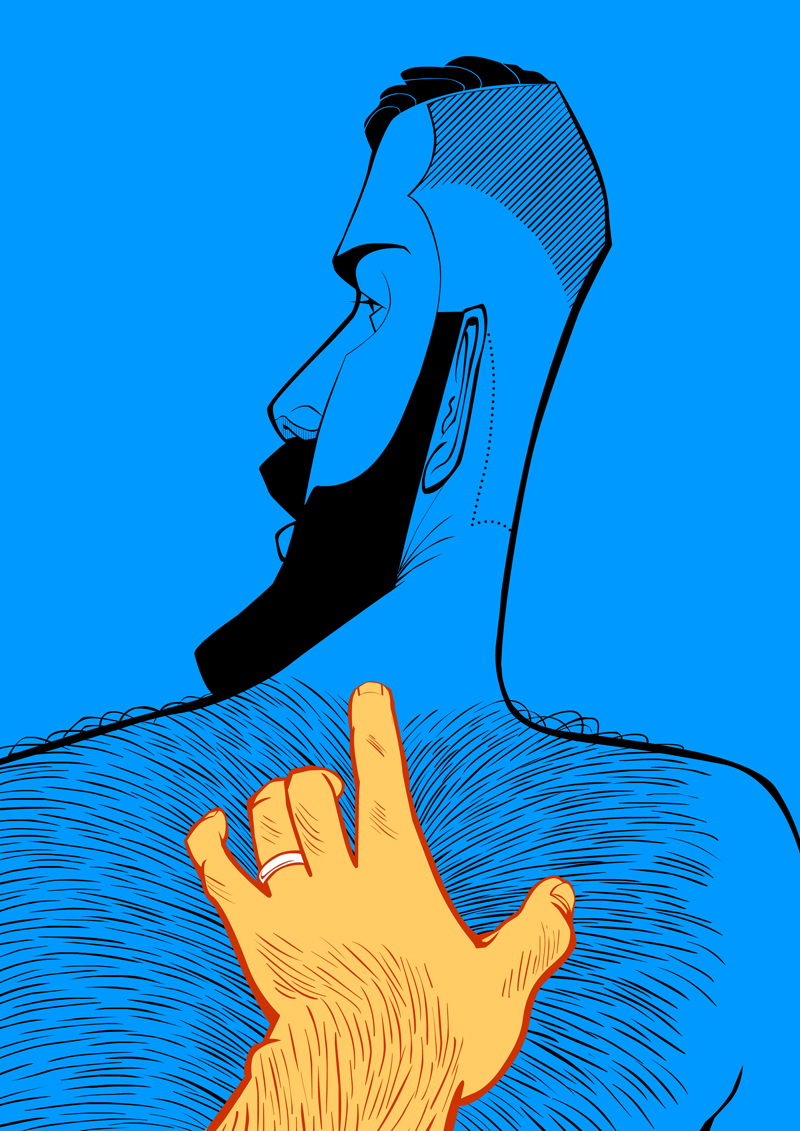
How did the idea for the zine come about?
I have a couple of friends doing their own – Sina Sparrow (Art Fag/Pretty Boys Ignore You) and Adrian Lourie (meat) and it seemed like a better way then the internet to connect with people, and to exercise total control over a project – which felt like a rare thing at the time, as I’d been creating and designing for other people, on their terms, for years. It was originally made as an album of portraits, and when I put the first one together it was so exciting to see a physical object that was all mine, a piece of me I could share. Recently I cast my mind back to my school days and remembered I used to write stories, illustrate them, staple them together and take them in to pass round to friends. They would love the story, always something inane pitched at a younger audience, about a squid thing in sunglasses wearing lipstick (and nothing else), and I’d race home and have another produced in time to take in the next day. One was a pastiche of Gremlins. And I used to make my own Top Trump cards. I was always making my own version of things I liked, it never ocurred to me I couldn’t be as good as anything I saw. I’m more chastened and realistic now, so less prolific.
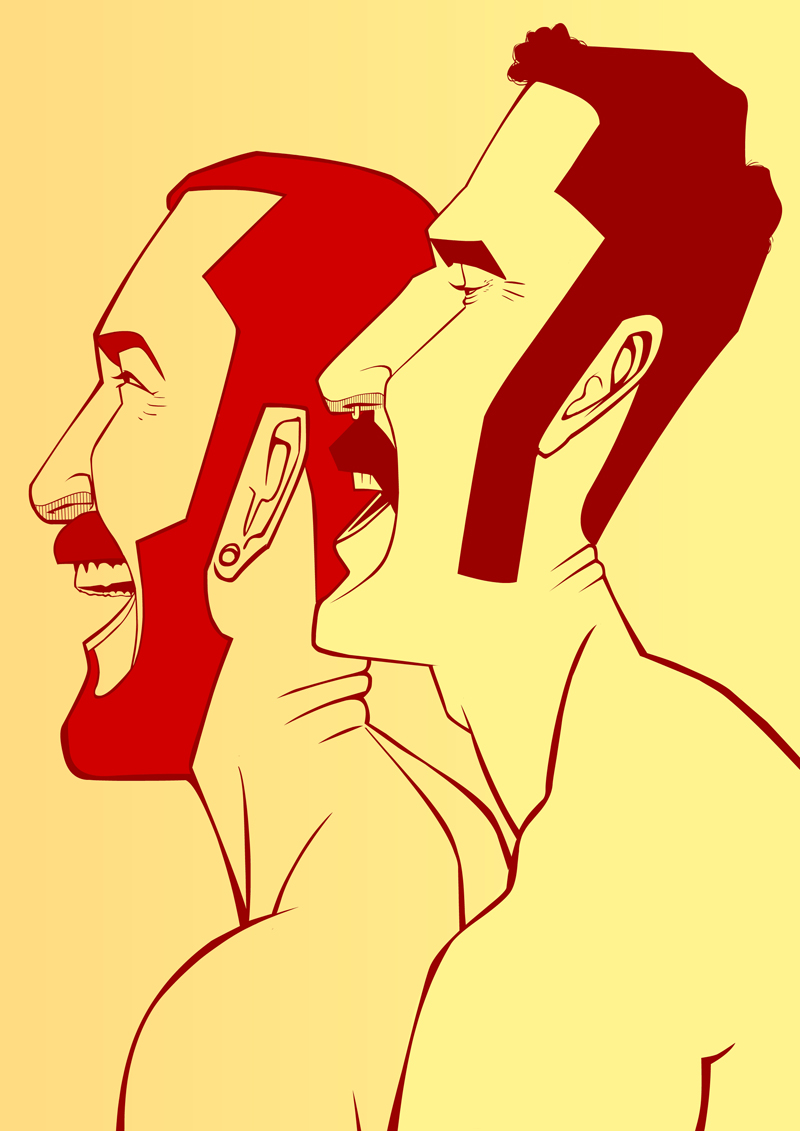
Tell us more about your artistic process.
I draw everything with a mechanical (clicky) pencil in a sketchbook, repeatedly until it’s somewhere interesting, something that flows and suggests and beckons, and then I draw it again digitally with a Wacom tablet and pen into (animation software) Flash. I like using flat, unmodulated colour, combined in such a way that it vibrates, or confuses – in a lot of pictures the background and the skin of the character are the same. The colour, the people, the paper, you and I are all vibrations ricocheting off each other, and I’m more interested in acknowledging that these are lines and blocks of colour on paper, than, say, creating an illusion or a convincing artificial world. My use of colour reflects that, I think. I like drawings that have life but look totally artificial and stylised. I’m also in the process of creating ceramic sculptures of heads, and making graffiti with living moss.
As a child I was particularly into formulaic things – I don’t see formula as a dirty word, it’s a restriction in which creativity can flourish, it’s a set of rules to be bent and played with. So something like Top Trump cards, or Point Horror books – a series of books about teenagers stabbing each other to death, yes, this was a big thing in the 90s – was fascinating to me, how each image on the cover or the card was totally different, but the same. They were canonised to a formula, with the text in the same place, so there’d be the satisfaction of recognition coupled with the revelation of a new element, or colour, or atmosphere to the image. I’d be fascinated by the different typefaces used on the covers of these books. For example, if the story centred around a drowning it would be a fluid, dripping font – ghoulish design decisions like that. And they would allude to a character or plot point, and stand as an analogue of something more complicated and unknowable. I’m excited by that formulaic quality of Francis Bacon’s work. I think everything I do is trying to figure out and complete the unfinished painting left on his easel when he died. Actually today I was commissioned to do a tryptich so watch your back, Frank.
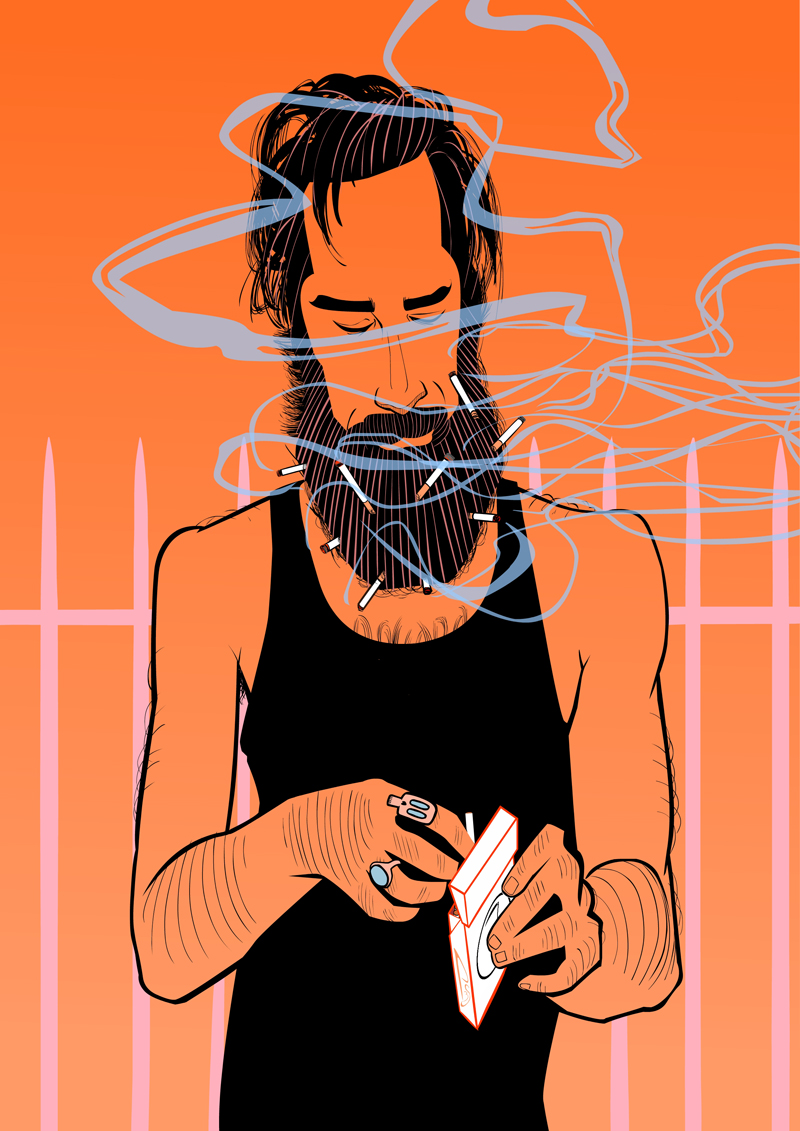
Why a zine?
Zines are a lawless and obscure art form. I wanted to be able to share my work in a way that drew attention to its value as an object, as printed matter, as drawings, and I wanted to be making something again, like when I was a kid. Staple, glue, ruler, guide lines, working past bedtime with dancehall reggae on the radio. VJing was very intangible; I was always having to decribe it to people and paint a picture with words when negotiating work. I don’t need to do any of that now, I’ve moved from live performance back into a more commodified artform you can hold in your hands. I think I like books more than the moving image at the moment; they’re more intimate; to create and for the reader to enjoy. You reach for a zine because the cover calls to you, and inside are hours and hours of an artist’s life.
Who do you make Pound Shop for?
Furverts like me.
What makes a piece of art queer?
Queers.
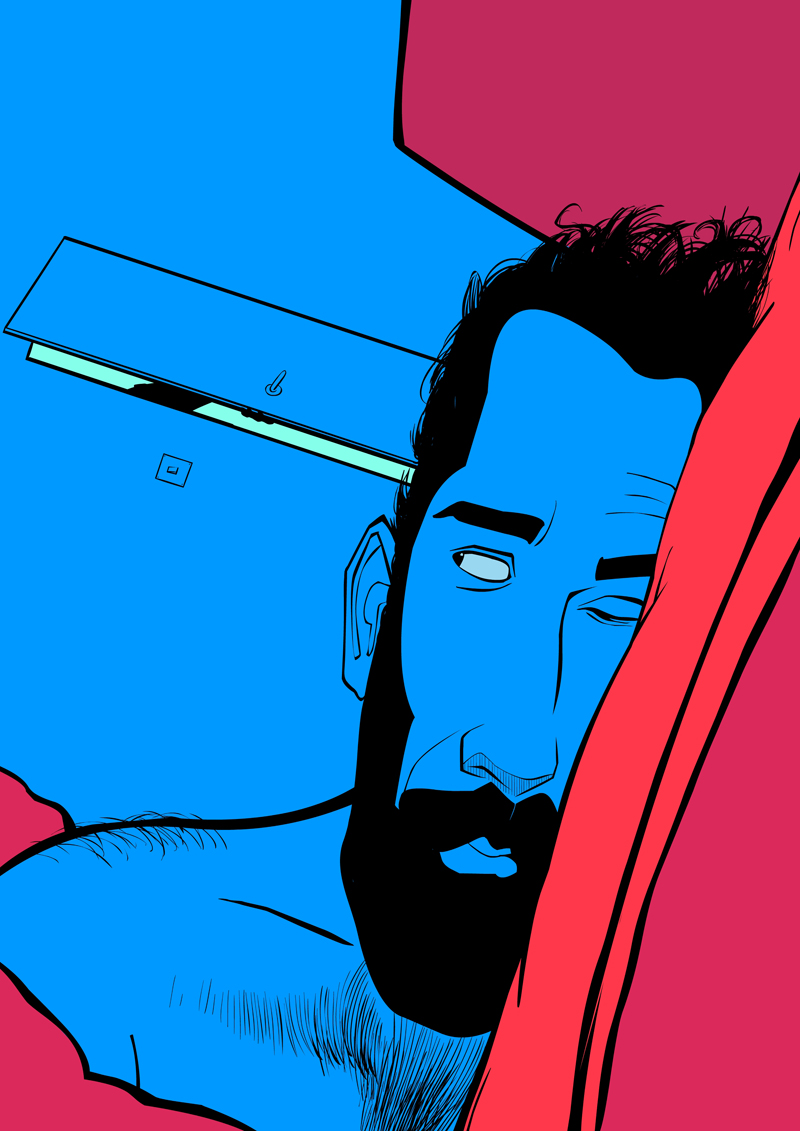
Do you feel like your identity is closely tied to your work?
Arguably there’s a strong element of self-portraiture in everything I draw because I’m pretty long. But it feels very confessional. With my projection work it wasn’t so personal – any collage has a thousand interpretations to each viewer, and these moving ones had endless variations, so it was fun and evocative but not much of a window into me. These pictures are very much my objectification of men. I’m not hiding it or coding it like I might have a long time ago; I’ve learned to be honest from other artists and from friends. And when the men are straight and I’m openly discussing their appeal with them, and conveying it through drawings, there’s the potential for embarrassment on both sides. But I think I’m almost immune to it. I don’t care if someone thinks I’m pining for them or making a pass at them, It adds some tension to the work. I drew someone a while ago and posted it on Instagram, and he took me out to a masked ball on Valentine’s Day. I consider that a successful drawing.
What inspires you?
The people I find. Today I finally sold a print of a lovely giant Greek bear I met on the South Bank last year, when he offered me olives outside his restaurant. The print was in my Edinburgh exhibition but didn’t sell. I dropped it off today and in the evening I was in Soho to see two portrait artists painting in a sex shop, and afterwards who do I see outside another restaurant, on Berwick street, but this beautiful man-mountain. I showed him the print on my phone while sampling his tzatziki. I didn’t tell him the picture is hanging over my desk. And is the banner image on my facebook page. And was the best drawing in Pound Shop 2. Most of the drawings I do are inspired by photos I find, simply because my online habits bring me in contact with so many photos I want to recreate and rework. But two or three of the drawings in each zine will be from photos I took myself, of men I know. I’ll see angles and planes in his face and just feel the overwhelming impulse to translate all those shapes and shades to intersecting lines.
Who are your artistic heroes?
Bacon, Lucien Freud, Hans Bellmer, Heinrich Kley, Quentin Blake, comic artists like Bill Watterson and Ralph König. Leigh Bowery, Nicholson Baker, Chuck Palahniuk, Theodore Roethke, Michael Haneke, Charlie Kaufman. An incredible dancer/contortionist called Rubberlegz, and a street dancer called Storyboard. I was far too obsessed with HR Geiger in my teens. I also like East London fashion illustrator James Davison’s work and I’m lucky enough to be working with him on some animation at the moment.
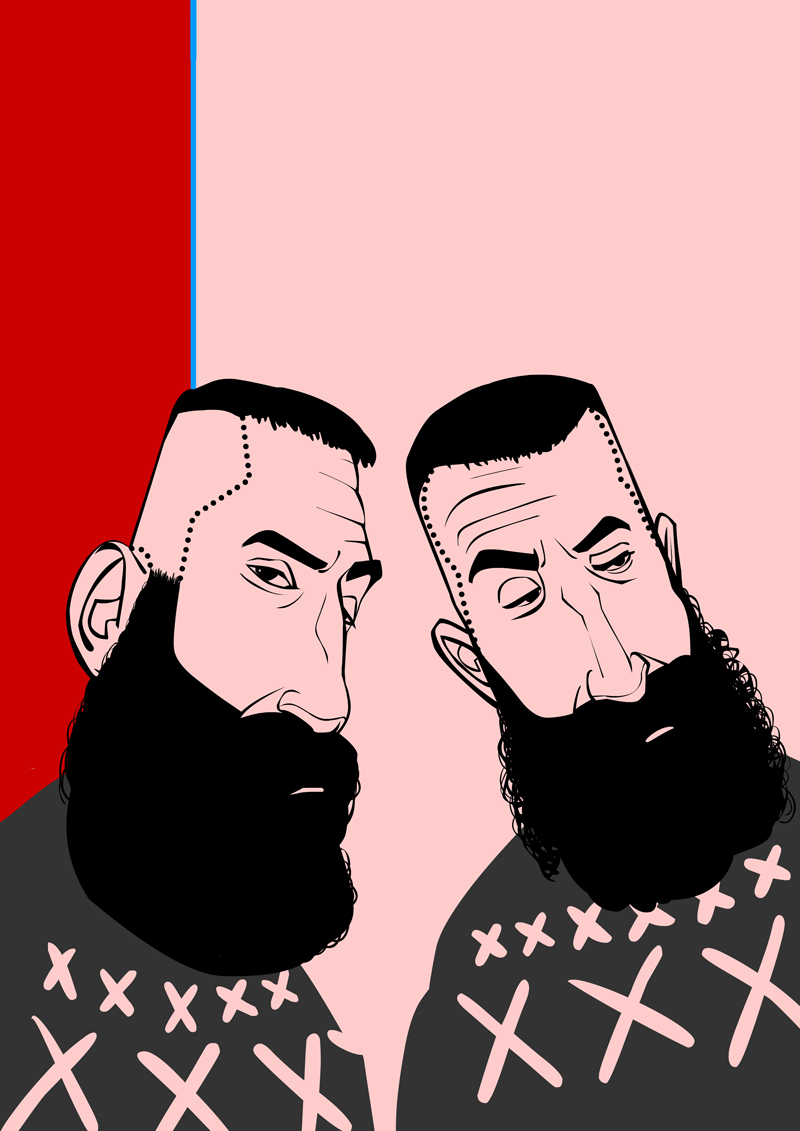
How has the zine been received?
Today Tate Modern sold out, in 4 days. It’s really touching that people are keen enough to collect whatever I publish next that they snap it up as soon as it’s announced. This is another reason to make a zine – when you VJ for a crowd of 2,000 in a stadium you don’t ever find out what they all thought. But now I can see from sales and communication online how people respond to each thing I draw. You don’t need praise to make art, but it picks you up on the days you think you’ve lost your talent, or never had it, or will never get it. And, more than that, you’re conveying feeling back and forth through the work. I made a decision some years ago that my reason for making art had to be to connect with people. I realised the best way to surround myself with likeminded people was to run my values up the flagpole and see what kind of crowd gathered underneath it.
Where would you like to see ‘Pound Shop’ go from here?
Good question… I see it continuing, more regularly, and perhaps containing a little more text and context. I’m making a list of people I want to talk to and draw, or want to bring to peoples’ attention, and I’ll be including some words with their portraits. I’m not envisaging any radical change for the zine, but I think there is an audience for other work to be published alongside it separately – like a graphic novel I’m tinkering with about the man who added lead to petrol, and a short story about a pair of trousers made from hair shaved off a field of meat. It’s science fiction. Which means it’ll happen one day. Which makes me a kind of prophet. Congratulations on this scoop for OutThere Magazine!
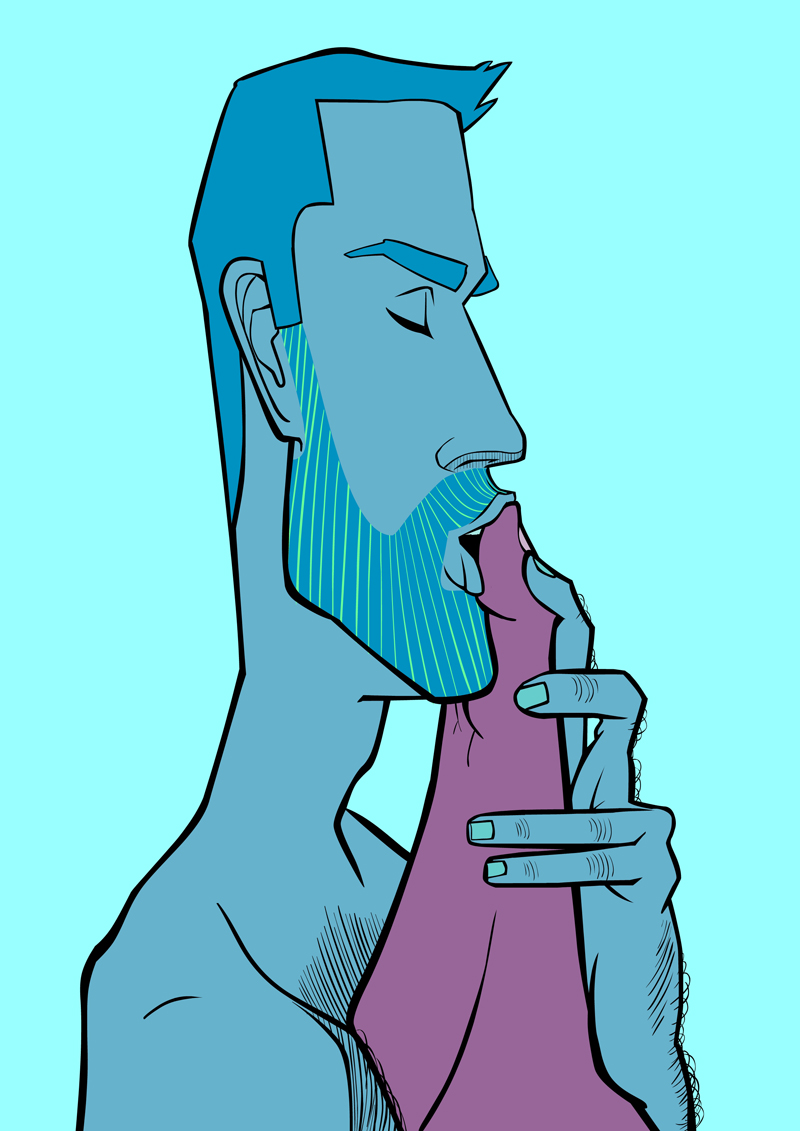
Pound Shop is available in the Tate Modern bookshop, GOSH! Comics, Prowler, Gay’s The Word and Foyles Charing Cross. You can find out more about the zine, and buy your copy online, HERE.
